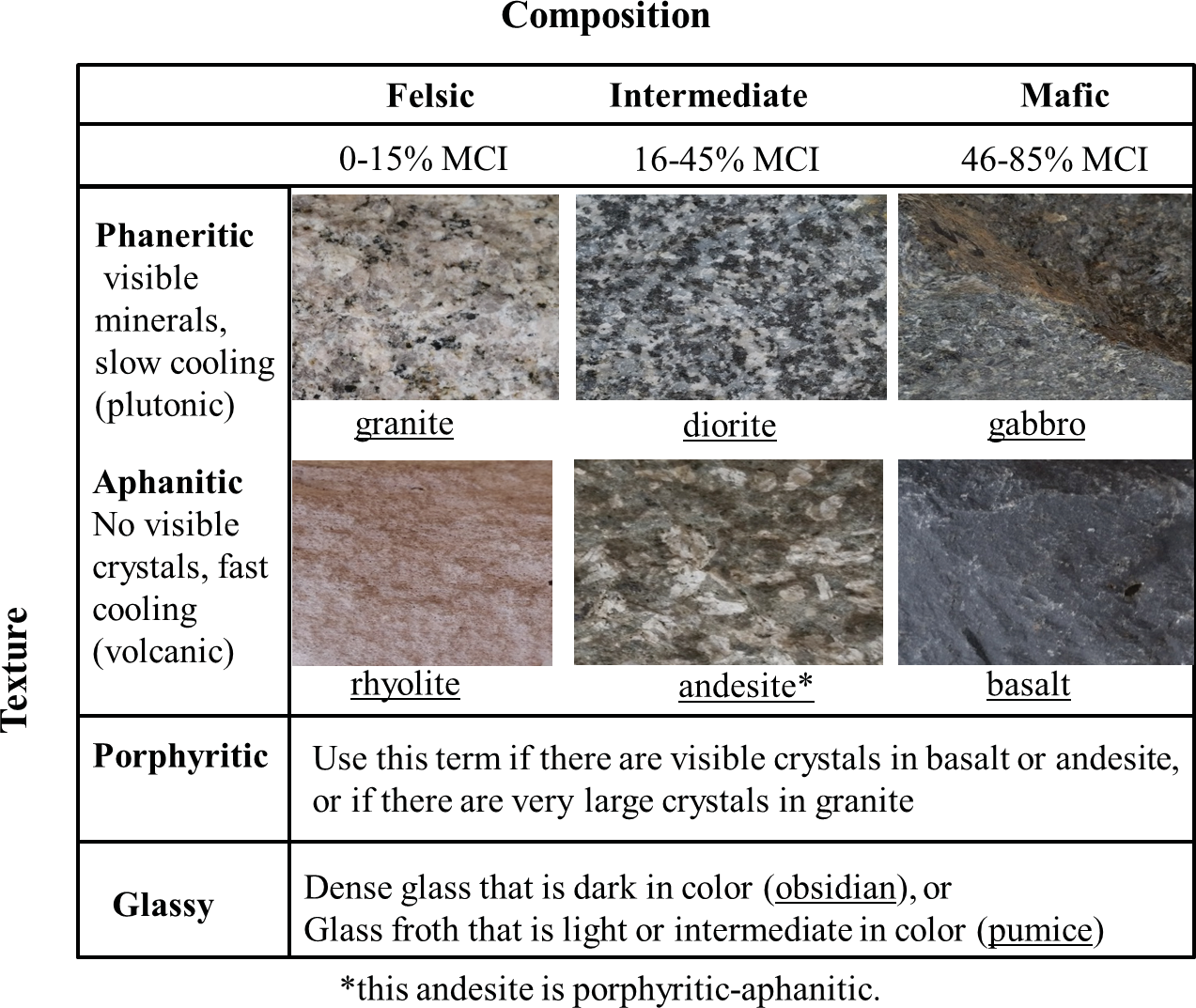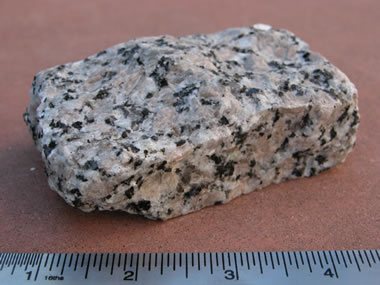10 points to first right answer.
Why does rhyolite have smaller crystals than granite you may use your identification charts.
The rapid cooling only allows small crystals to form.
Rhyolite is made up of quartz plagioclase and sanidine with minor amounts of hornblende and biotite.
You may use your identification charts decreasing the silica content.
Granite has a very similar chemistry to rhyolite.
Why does rhyolite have smaller crystals than granite.
Trapped gases often produce vugs in the rock.
Rhyolite has smaller crystals than granite because rhyolite formed from lava and granite forms from magma.
It is usually pink or gray in color with grains so small that they are difficult to observe without a hand lens.
Rhyolite can be considered as the extrusive equivalent to the plutonic granite rock and consequently outcrops of rhyolite may bear a resemblance to granite.
Granite vs rhyolite characteristics assist us to distinguish and recognize rocks.
You may use your identification charts rhyolite cooled quicker than granite.
This doesn t allow a lot of time for crystals to grow in the rock.
Cools faster so crystals don t have time to form.
First to form and have the same melting point.
Rhyolite which cools at the surface cools much more quickly than granite which cools underground.
The rock received its name from german geologist ferdinand von richthofen better known as the red baron a world war i flying ace the word rhyolite comes from the greek word rhýax a stream of lava with the suffix ite given to rocks.
Since granite cools underground from magma largecrystals form because the magmahas a chance to cool slowly.
Granite vs rhyolite characteristics.
Why are olivine and calcium rich feldspar found together in igneous rocks.
However granite solidifies crystallises in intrusions deep beneath the surface where the insulated environment results in the granite cooling slowly and therefore having large crystals.
Rhyolite is a silica rich igneous rock found throughout the world.
Rhyolite is an extrusive igneous rock with a very high silica content.
Due to their high content of silica and low iron and magnesium contents rhyolitic magmas form highly viscous lavas they also occur as breccias or in volcanic plugs and dikes rhyolites that cool too quickly to grow crystals form a.
Though some rocks look identical they have certain characteristics which distinguish them from others.
Characteristics of rocks include texture appearance color fracture streak hardness etc.




























